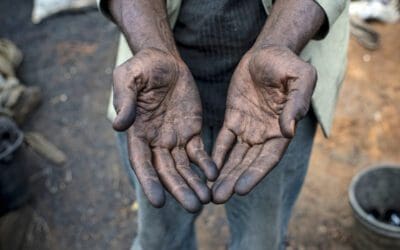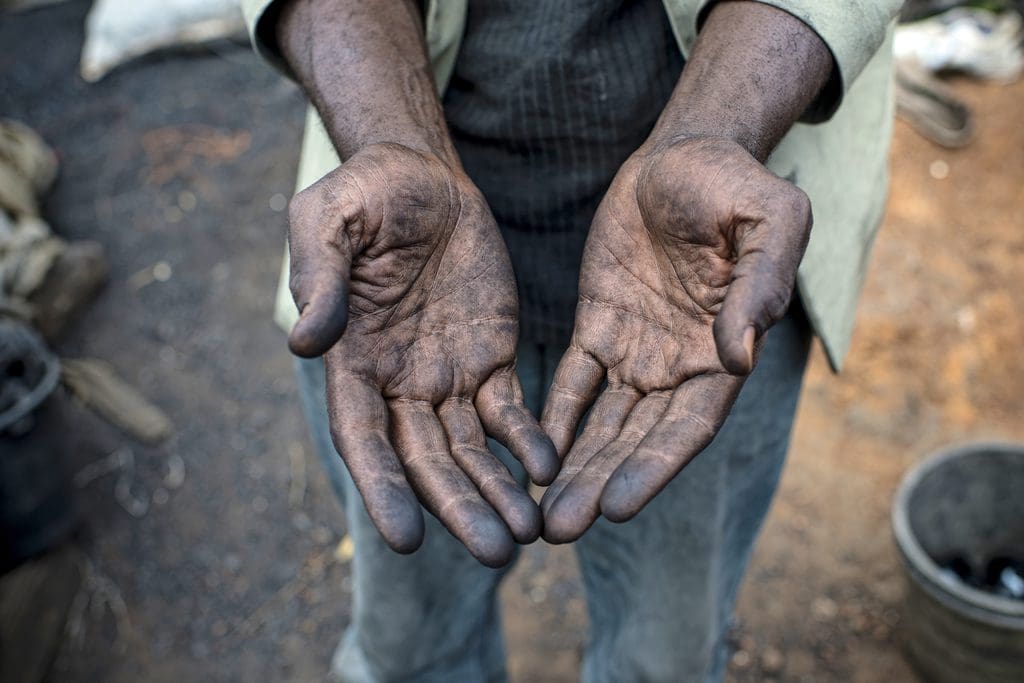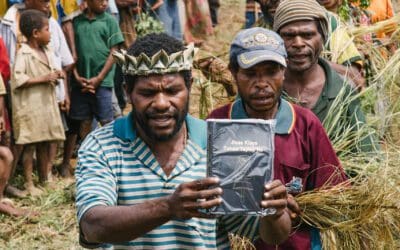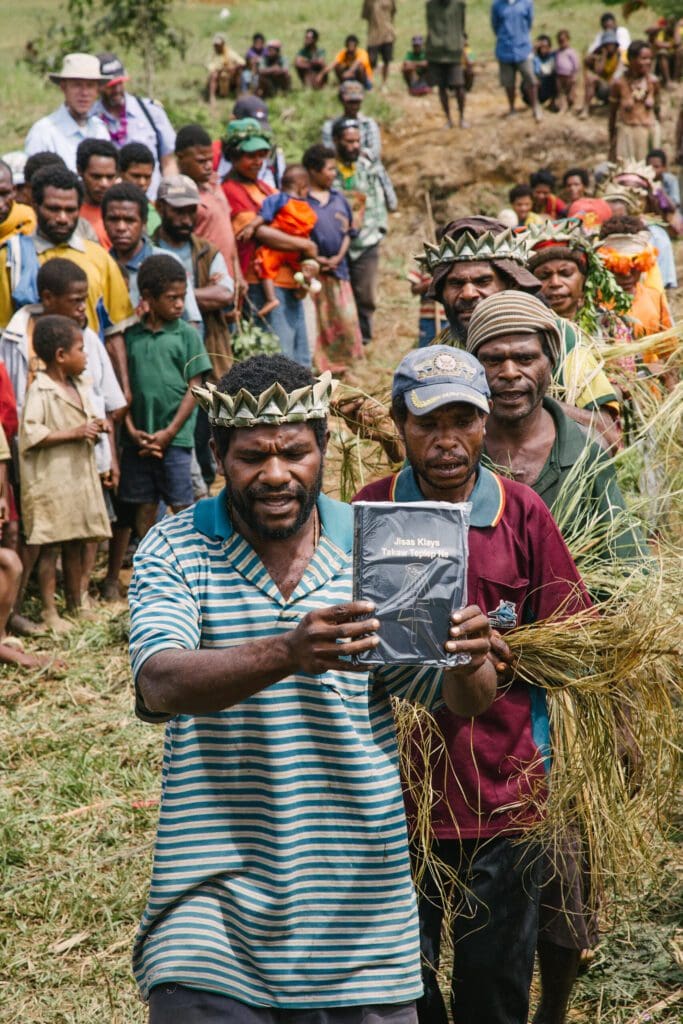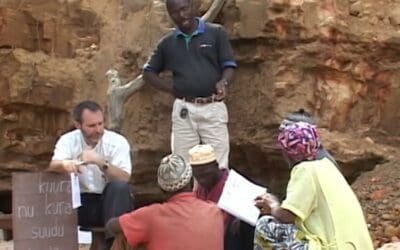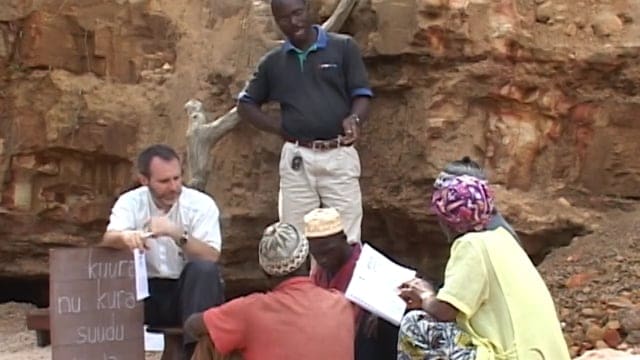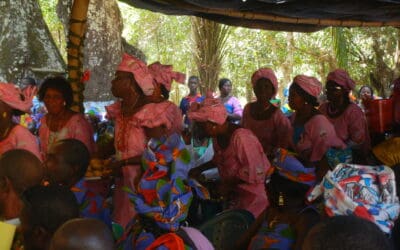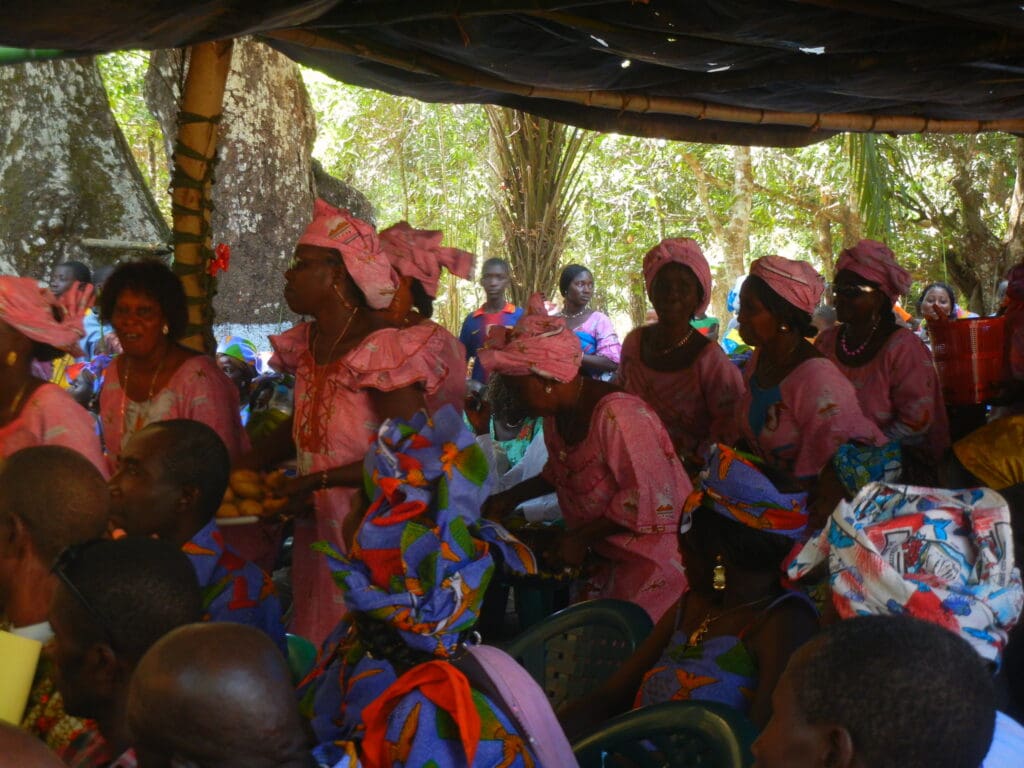Genesis. Luke. Ruth. Acts. Joshua. James. Exodus. Deuteronomy. 1-3 John. Mark. Numbers. Leviticus. Matthew.
This is the order in which the Kawah team progressed through their translation project.
I know what you’re thinking. Why don’t you just go ahead and say it? “That is the most unique (read “bizzare”) translation sequence I’ve ever seen. Aren’t you at least supposed to start with the New Testament? What were you thinking?”
A deliberate decision
Strange as it may seem in light of the list you just read, our Kawah translation team didn’t just draw names from a hat to see which books to translate when. Each decision was made deliberately, taking into consideration a variety of factors. Let me chronicle this history for you.
My husband and I arrived in our host country in 1995 to start Pioneer Bible’s third translation project in West Africa. The religion imported from Arabia dominated the area. Infrastructure resources were limited, and the country was experiencing a period of political instability. We saw no prospective teammates on the horizon to join us in serving the Kawah people.
Our goal upon arriving was to meet our religious neighbors on common ground. Their holy book instructs them to read Moses’ books (Genesis to Deuteronomy), David’s book (the Psalms), and the Gospels. So it was natural to plan to translate these books first.
Genesis and Luke
We began with Genesis, working closely with Amara, the Kawah man who had been chosen to serve as our co-translator. Genesis was a logical starting place because it gives the biblical account of Abraham, Ishmael, and Isaac — all central to their faith. Genesis also lays the foundation for understanding our sin problem. (Genesis 2-3 shocked Amara, who believed sin had entered the world just a few generations ago.)
Genesis took a really long time. (The first books translated always go slowly because of all the groundwork that is being laid as the translation team works. Besides that, Genesis is one of the longest books in the Bible.)
When we finally finished all 50 chapters of Genesis, we chose to translate Luke next. The Jesus Film had already been produced in our area’s trade language, and its script was the Gospel of Luke. We wanted the Kawah people to have written copies of Luke in their own language as a follow-up to watching the Jesus Film.
Not on our list
Next came Ruth. “Wait!” you’re thinking. “That wasn’t on your list of books to translate first.” You’re right, but we did it anyway. We had a good reason.
Most years, all our translation teams in West Africa came together for a workshop. That year, our director chose to have us work on Ruth. Not only did this build each team’s skill set, it also allowed them to return home with a solid draft of an entire Old Testament book. After the workshop, our Kawah team polished Ruth and got it approved, making it our third published book.
What if the next book is the last?
With three books under our belt and our host country again experiencing a time of political uncertainty, we faced a decision. If we could translate only one more book, what should it be? We chose Acts, the story of the Church. Because Luke authored Acts, its vocabulary and style were familiar to the team. Translating it was easier for the team, and reading it was easier for the Kawah people. Yeah!
More changes
Our original plan had us getting back to Moses’ books to translate Exodus and Deuteronomy. But two important developments changed this plan and drew us to our next two books.
The first development came with the arrival of new teammates — finally! One of these teammates was Kirk, a Scripture impact specialist. He wanted the Kawah people to have the book of Joshua so he could use it for leadership training with a small group of young men who came to be known as the “Scripture Guys.”
Second, our consultant (the linguistic specialist who carefully checks our work and approves it for publication) advised us to change genres. He wanted us to do a letter next instead of another narrative book.
This wasn’t an arbitrary recommendation. Hands down, narrative books — stories — are the easiest to translate. By this time our team had completed five narrative books, and he could see that we were ready to gain experience in a more challenging genre. Hence James came next. Translating it enabled us to get our feet wet in the epistles without drowning in the long sentences and deep theological questions typical of Paul’s letters.
Back to our list at last!
Finally, Chocho and the Kawah translators returned to working on Moses’ books per Plan A — creating common ground with the dominant religion. Exodus and Deuteronomy were next in line.
The Exodus portions were pretty straightforward. The law portions? Not so much, due to all the unique vocabulary words for unclean animals, molds, and skin diseases. (Just what everyone wants to spend their day discussing, right?) Amara loved learning about Moses the prophet, and the laws made sense to him.
Here we go again
Enter Linda, who was in training to become a translation consultant. She had already visited our Kawah team three times. From her home in the U.S. she was working part-time to produce the Kawah-French-Greek/Hebrew interlinear texts our consultant needed for checking our work.
Linda’s mentor wanted her to gain more on-the-field translation experience. Working with John’s three brief letters allowed her to complete the whole translation process, from first draft to polished translation, during the time she was able to spend with us.
Momentum
From that point onward, the Kawah translation team worked simultaneously on both Old and New Testament passages. Linda continued as part of our team. As a specialist in Greek, she facilitated work on the Gospel of Mark while Chocho facilitated work on Numbers and Leviticus. (He’s a Hebrew geek.) Because Matthew was the only synoptic gospel left to tackle, it was next in line.
The Kawah team has grown into an experienced, confident group that is gaining momentum toward finishing the New Testament.
By the time we had completed all the books in our original plan — along with all the others that weren’t — the Kawah team had grown into an experienced, confident group. As this is written, we are gaining momentum as we push to finish the New Testament, still working on multiple books simultaneously. God is making this happen, and we are grateful.
Other teams have different stories
These Kawah translation priorities — and the adjustments we made to our plans — are just one example of how mission strategy, teamwork, prayer, and God’s intervention combine to get the Bible into His children’s hands. In places where Christianity is more established than in Kawah, church leaders also have a voice in the decision-making process. Each Pioneer Bible translation team has its own story to tell.
Please pray with us for God to clarify each team’s translation priorities and pave the way for their completion.

